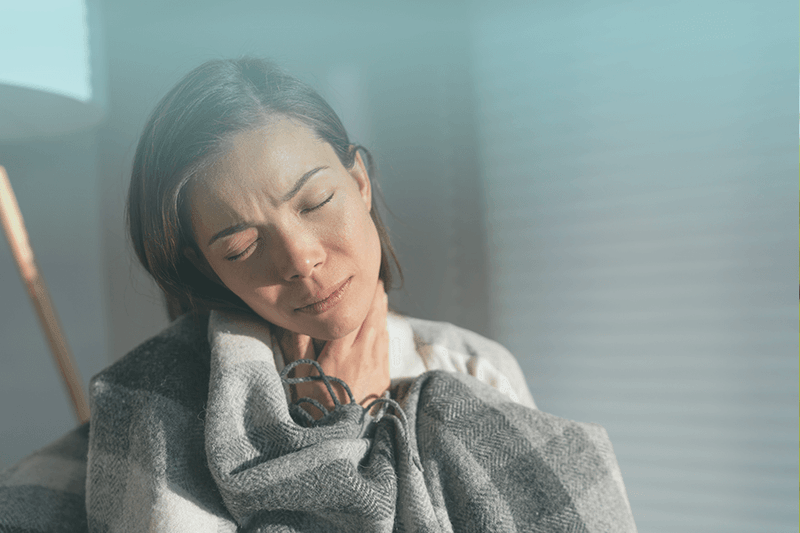
Idaho Allergy Season: Addressing Your Concerns
As seasons undergo dramatic changes, so too can your allergies. If you’re struggling with allergic reactions, or simply want to get ahead of those pesky symptoms, you can.
As seasons undergo dramatic changes, so too can your allergies. If you’re struggling with allergic reactions, or simply want to get ahead of those pesky symptoms, you can.
A mecca for precious gems (and potatoes), this Rocky Mountain state is a nature lover’s paradise. From the towering peaks of Mount Borah to the plunging gorge of Malad, Idaho has more than its share of landmarks to draw residents and visitors alike. Whether you fancy churning rapids, harrowing ascents, or a laid-back life on the river, Idaho has it.
But all this fun and recreation take a toll. Before you can dive deeper into the natural wonders of the Intermountain West, you need to know the perils. Idaho allergy season can pack quite the punch if you’re susceptible to seasonal allergies.
Fortunately, with the right approach, proper measures, and effective treatment, you can navigate Idaho’s allergy seasons more easily.

4 Things You Must Know About Idaho Allergy Season
Idaho’s allergy season is not vastly different from that of other states. As you may know, tree pollen is most prevalent in the spring, grass pollen during the summer, weed allergies in the fall, and household irritants like mold and dust in the winter. That said, there are definite misconceptions and facts that Idahoans should be aware of as they prepare for each season.
Let’s take a look at four things you must remember as you move through the Idaho allergy seasons.
1. “Idaho Allergy Season” is Actually Year-Round
When we think of allergy seasons, we think of environmental factors such as pollen, dust, and mold, sources of symptoms that can occur both indoors and outdoors. In other words, we think of allergens, pesky little buggers that can get on and into our bodies, thereby triggering symptoms. Depending on our lifestyles, sensitivities, and environmental changes, we may experience a range of symptoms.
While the species of plants triggering these symptoms vary by season and month, there are always allergens in our environments. The question, of course, is whether you are susceptible to those allergens. Other environmental allergens, like those commonly found in households, are considered perennial because they exist year-round.
While pet dander, mold, cockroach, and dust mite allergies may worsen during wintertime, they do not come and go seasonally as do pollen species.
2. Idaho Seasonal Allergies Can Be More Than ‘Inconvenient’
Even if you don’t suffer allergies that you deem severe, it is always advised that you speak with a healthcare provider. Rather than experiment with dubious at-home treatments, or repeatedly use OTC meds, you should contact an allergist or immunologist.
According to the Asthma and Allergy Foundation of America, 81 million Americans were found to have suffered seasonal hay fever in 2021. If you’re not familiar with hay fever, it’s more than your typical seasonal Idaho allergies. Hay fever refers to a condition typically brought on by pollen, mold, and dust. It can become a serious chronic condition, persisting for months on end and causing constant sneezing, watery eyes, itchy throat, and that oh-so-lovely mucus-filled cough.
Whether you have hay fever (seasonal allergic rhinitis) or something else, it’s always a good idea to speak with a specialist.
3. Severe Allergies Should Always Be Monitored By Specialists
In a person with minimal allergies, the immune system largely ignores allergens. As a result, symptoms are minor or nonexistent. In people with worse seasonal allergies, however, the immune system reacts disproportionally, triggering various chemical reactions within the body that manifest as symptoms.
Although we all may suffer from certain symptoms from time to time, such as scratchy throat, runny nose, or congestion, chronic and recurring symptoms are more serious. Severe reactions like hives, difficulty breathing, vomiting, and fainting demand the immediate supervision of medical professionals. Rather than tinker with DIY remedies or OTC medications, individuals experiencing these issues should consult seasoned allergy specialists as soon as possible.
4. Idaho’s Seasonal Pollen Allergies Can Vary Significantly
While most pollen is yellow or white, the grains can actually be any color on the spectrum. Generated by flowers and plants, pollen grains are indispensable to the reproduction of countless species across the planet. They are critical components in fertilization and are carried to and from plants and flowers via various means, including mediums like water and wind, as well as insects and animals like bees, birds, bats, and butterflies.
Be Cautious About Televised Pollen Counts
Did you know that pollen grains vary significantly within and between tree, grass, and weed species? Sometimes, the pollen grains are clumped and do not disperse as easily. Other grains are far smaller, traveling vast distances on the wind.
We must always take “low” or “high” pollen counts with a grain (pun intended) of salt. These counts do not necessarily correspond with the severity of allergic reactions. Depending upon your sensitivities, lifestyle, and risk factors, you may suffer severely on “low” days while feeling relatively fine on “high” days, and vice versa. If you’re somebody highly allergic to juniper and poplar tree pollen in springtime, you may have trouble even when the counts are marginal.
It’s important to track the environmental allergens most relevant to you throughout Idaho allergy season. This proactive approach may be a great way to reduce exposure and prevent severe symptoms. Just remember, some allergens - regardless of season - may affect you.
Perennial vs Seasonal Allergies: The Differences
Although the term “seasonal allergies” is used to describe a variety of allergic reactions and symptoms, it is not an all-encompassing term. In its most precise meaning, “seasonal allergies” refers to exactly that: allergies that occur seasonally. In other words, allergies that come and go, or increase or decrease, depending on the season. While this may indicate the actual four seasons or specific months within Idaho’s seasons, the term typically refers to allergies due to pollination.
But What About Symptoms Outside of Idaho Allergy Season?
This is where Idaho’s perennial allergies come into play. So-called perennial allergies in Idaho are those symptoms and allergic reactions that occur year-round and often include chronic issues. These are issues that do not typically resolve with the dissipation of seasonal pollen. Rather, they persist regardless of changes in climate and time of year. In other cases, so-called perennial allergies may appear and disappear repeatedly throughout the calendar year without an obvious pattern.
Not sure if your symptoms are from Idaho allergy season or perennial allergies?
If your symptoms regularly dissipate toward the end of Idaho’s spring months or the start of summer, they’re probably due to seasonal allergies and not perennial allergies. That said, certain perennial allergens could be causing these problems, so you should always consult a healthcare provider for the best information.
What Causes Perennial Allergies in Idaho?
Idaho is no different than many states in that, depending on where you live and how you live, it could present unique perennial challenges. If you’re racking your brain, trying to think what allergens could cause year-round, chronic, or intermittent allergies, simply look inside. Like it or not, your home could become ground zero for dust mites, pet dander, mold spores, and yes, even cockroaches.
These allergens don’t care what time of year or season it is. As long as they have ample fuel to accumulate and spread, they’ll do their thing. And what gives these pesky Idaho allergens the supply they need to thrive? In most cases, moisture.
Common Household Allergens Throughout Idaho
Consider, for instance, mold. Mold species can be found everywhere, all months of the year, indoors and outdoors. If you’re on a nice farm in Idaho, dead leaves are a perfect breeding ground for mold. Inside, mold loves to accumulate in damp bathrooms and basements, as well as in fermented foods and beverages, and dusty papers. Whatever you do, you should always try to address leaks and floods as soon as possible.
Speaking of moisture, dust mites and cockroaches love humidity. And if you have pets, their dander may cause skin rashes, runny noses, trouble breathing, and other lovely symptoms. To treat these issues, consider regular cleaning and maintenance. Wear a dust mask as you get in those nooks and crannies, and ensure your air purifier is clean as a whistle. Frequently washing your bedding and blankets can also help keep Idaho’s indoor allergens from accumulating.
Unfortunately, you may still have to seek medical specialists for help. Given an increasing trend toward longer, more potent Idaho allergy seasons, more people may be suffering than ever. Whether cottonwood in March, ragweed in September, or dog dander year-round, seasonal and perennial allergies are here to stay. The trick is, knowing how to treat them!
Allergy Symptoms Vs. Non-Allergy Symptoms
We’ve discussed the difference between perennial and seasonal allergies in Idaho, but what about other sources of trouble? What about other illnesses, such as colds or flu viruses, that share similar symptoms with allergies? While you should always consult a healthcare provider, it’s also a good idea to know general differences. What’s causing your particular situation? Is it a sinus infection? A nasty cold? A low-grade flu? A new variant of COVID-19?
Here are some symptoms to remember as you deal with various conditions:
Common Symptoms By Illness Type
| Symptoms | COVID-19 | Sinusitis | Cold | Flu |
|---|---|---|---|---|
| Aching | Occasional | Occasional | Occasional | Common |
| Fever | Occasional | Occasional | Rare | Common |
| Fatigue | Common | Common | Occasional | Common |
| Chills | Occasional | Occasional | Rare | Common |
| Cough | Common | Common | Occasional | Common |
| Stuffy Nose | Rare | Common | Common | Occasional |
| Sneezing | Rare | Occasional | Common | Common |
| Shortness of Breath | Common | Rare | Rare | Occasional |
| Headache | Occasional | Common | Rare | Common |
If you’re able to successfully narrow your symptoms down to a specific cause, you’re in a good position! With proper medical treatment, you can begin to treat your symptoms and start living a healthier, happier life.
Just be careful. Even if you know your issues are from allergies, there are many variations therein. Aside from the environmental allergies discussed thus far, you must also consider food-related allergies. Generally speaking, food allergies are caused by ingesting certain foods that trigger an immune response. Environmental allergies, by comparison, are triggered by contact with, or inhalation of, allergens in your immediate Idaho environment.
Don’t Forget Cross-Reacting Allergens!
In some cases, however, the distinction between food and non-food allergies can become dubious. Research indicates that some allergy sufferers may actually have cross-reactivity in their allergies. Cross-reactivity occurs when the proteins in, say pollen, are nearly the same as the proteins in another potential allergen, such as a fruit.
Oftentimes, people allergic to one environmental allergen are allergic to another food allergen. For instance, many people with ragweed allergies also have allergies to bananas, melons, and cucumbers. As always, speak with your healthcare provider about potential cross-reactivity as you navigate your symptoms.
A Potential Treatment For Idaho Allergies
A newer form of immunotherapy, sublingual allergy drops have the potential to not only ease your seasonal and perennial non-food allergies but also prevent symptoms from ever occurring. Although every immune system is different, and no results are guaranteed, personalized drops have shown efficacy in certain studies.
Formulated based on your specific immune system response, our allergy drops don’t cut corners.
Getting started is easy. First, you order a FREE at-home allergy test kit and deliver a small blood sample. In just days, we can analyze and interpret your blood, and then tailor the allergy drops right for you.
**Disclaimer: Allergy drops may not work for everyone. While medically indicated based on some research, they are not a comprehensive or proven treatment protocol. Consult your healthcare professional for a personalized, supervised treatment plan.

FAQ
Where Does Idaho Allergy Season Rank?
According to the Asthma and Allergy Foundation of America, Boise, Idaho, ranks 50th in the nation out of the country’s 100 largest cities. However, this ranking in and of itself may mean very little. Overall, the severity of Idaho’s allergy season depends on each person’s susceptibilities. Your lifestyle, exposure, and related environmental factors all impact the severity and duration of your seasonal and perennial allergies.
What Are The Main Allergens in Idaho?
Perennial allergens include various types of dust mites, cockroaches, molds, and animal dander. As for seasonal environmental allergies induced by pollen, you must consider an array of trees, grasses, and weeds. Common tree allergens include Big Sagebrush, Western Poison-Ivy, White Mulberry, and Gray Willow. Common weed allergens include Annual Ragweed, Black Mustard, Tumbling Orache, and Dragon Wormwood. Finally, grass allergens include Orchard Grass, Colonial Bent, Red Fescue, and Common Timothy.
Do Allergy Drops Cure Seasonal Allergies?
While we wish there was an easy cure-all, such a thing simply does not exist. That said, research studies support sublingual immunotherapy as a viable option for certain allergy sufferers. If you suffer from chronic, recurring, and/or severe allergies - or simply want relief - our allergy drops may be for you! Taken as prescribed, they have the potential to relieve serious symptoms and may even contribute to allergy-free living when used for years.
How Do Allergy Drops and Shots Compare?
Allergy shots have been around longer and were the first form of allergen-based immunotherapy to go mainstream. However, there are certain disadvantages to allergy shots vs allergy drops. Traditional allergy injections require significantly more time. You have to visit a clinic and oftentimes the shots exacerbate your symptoms for a period. By contrast, allergy drops are painless, rarely have side effects, and just take seconds to administer. If you want to learn more, send us a message or give us a call!
Overcome your allergies at home with our doctor-led therapy.
Get started with our free allergy test kitGet Started with no test needed.
Overcome your allergies at home with our doctor-led therapy.
Get started with our free allergy test kitGet Started with no test needed.



